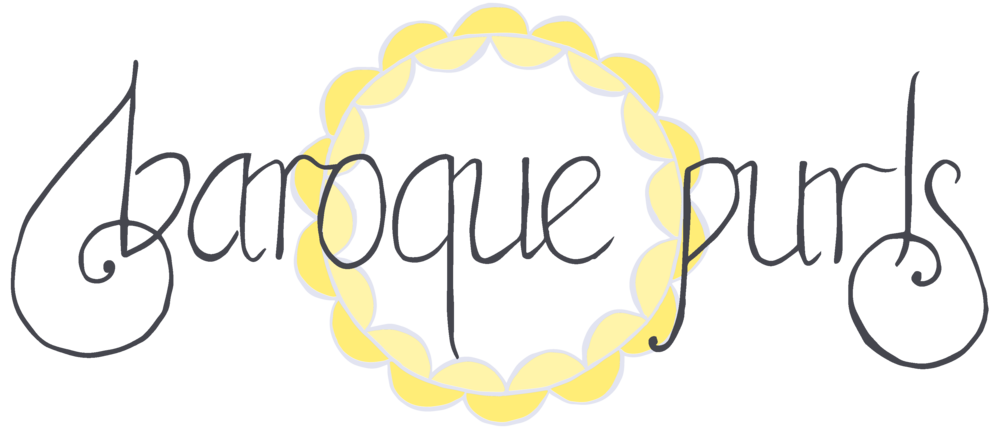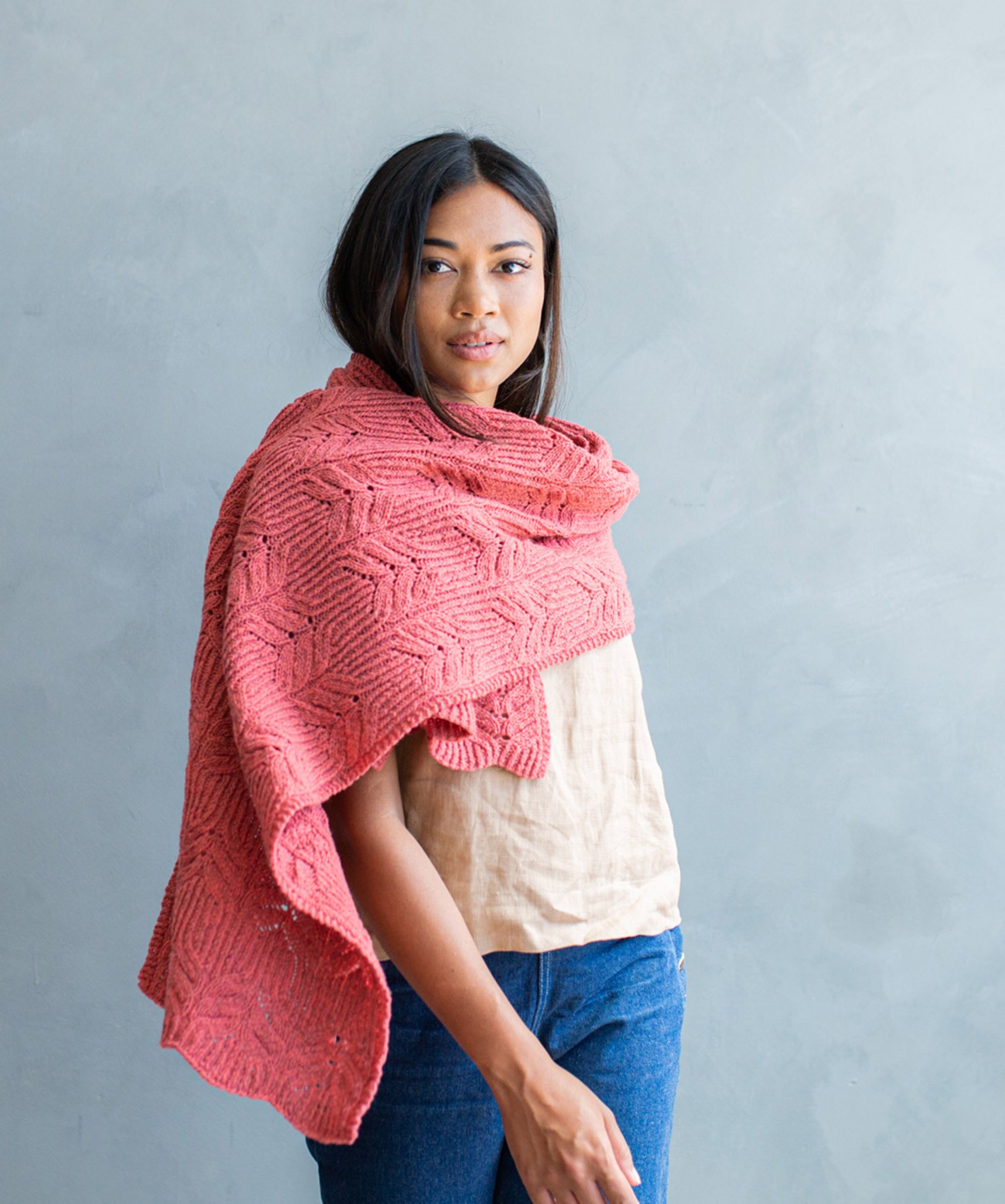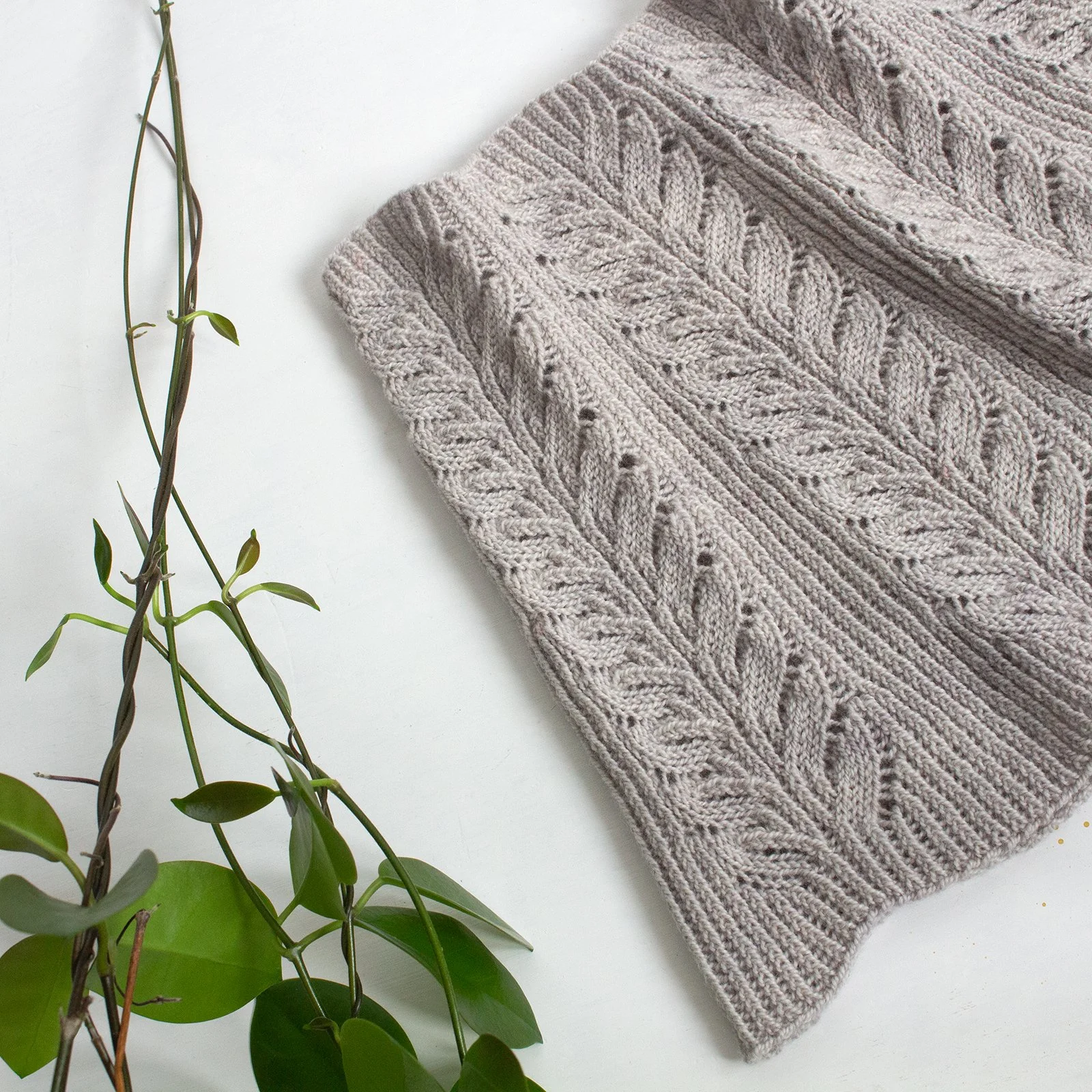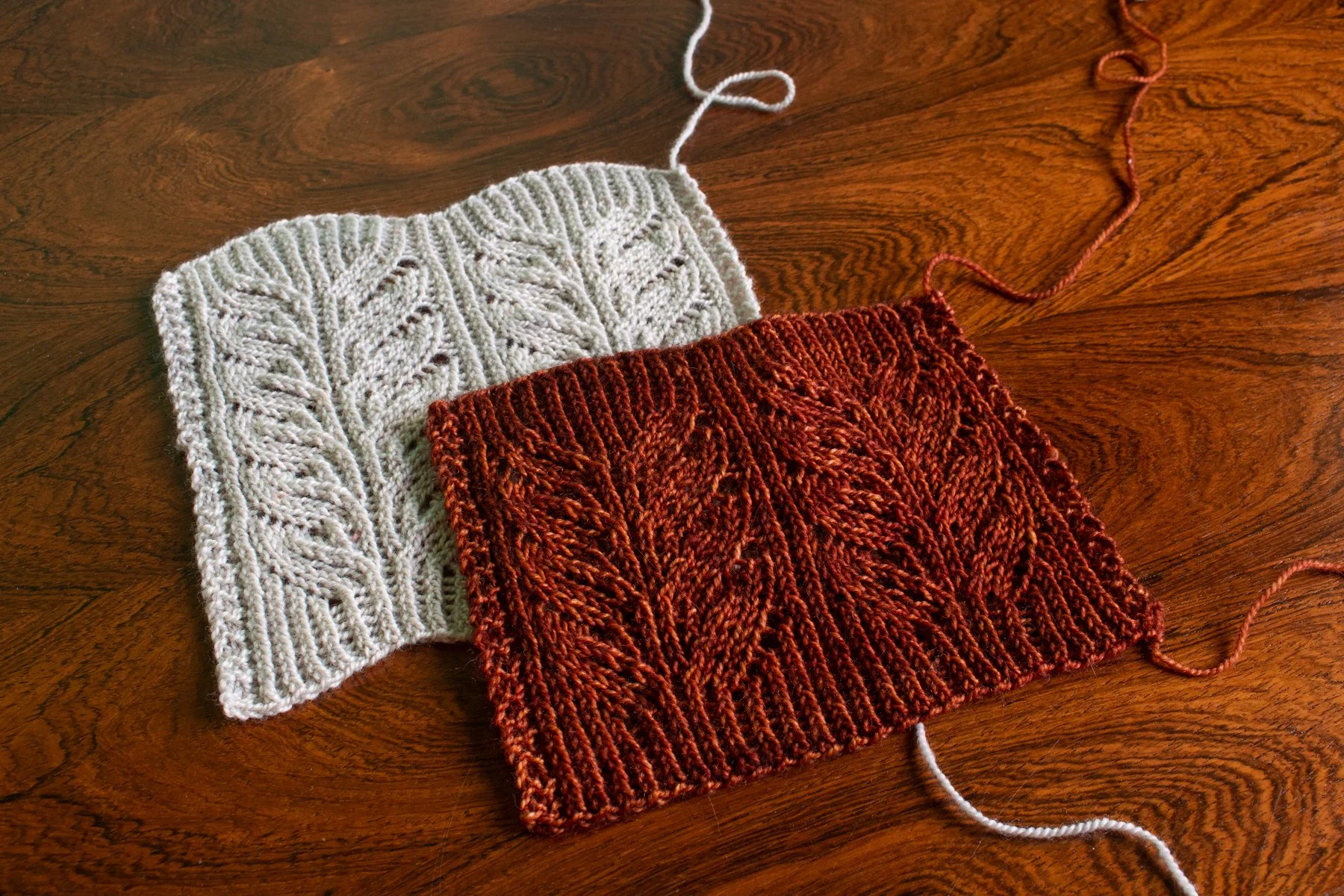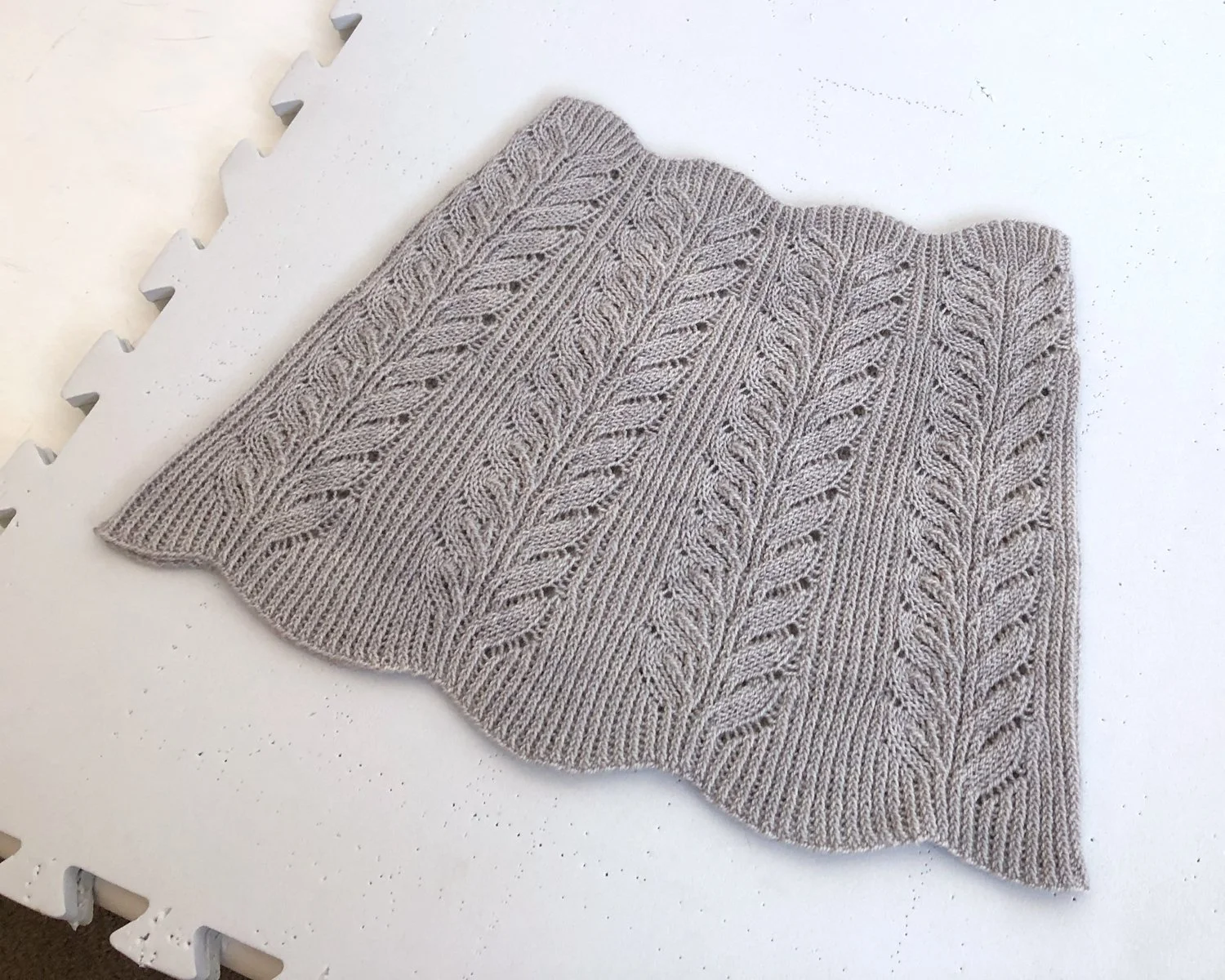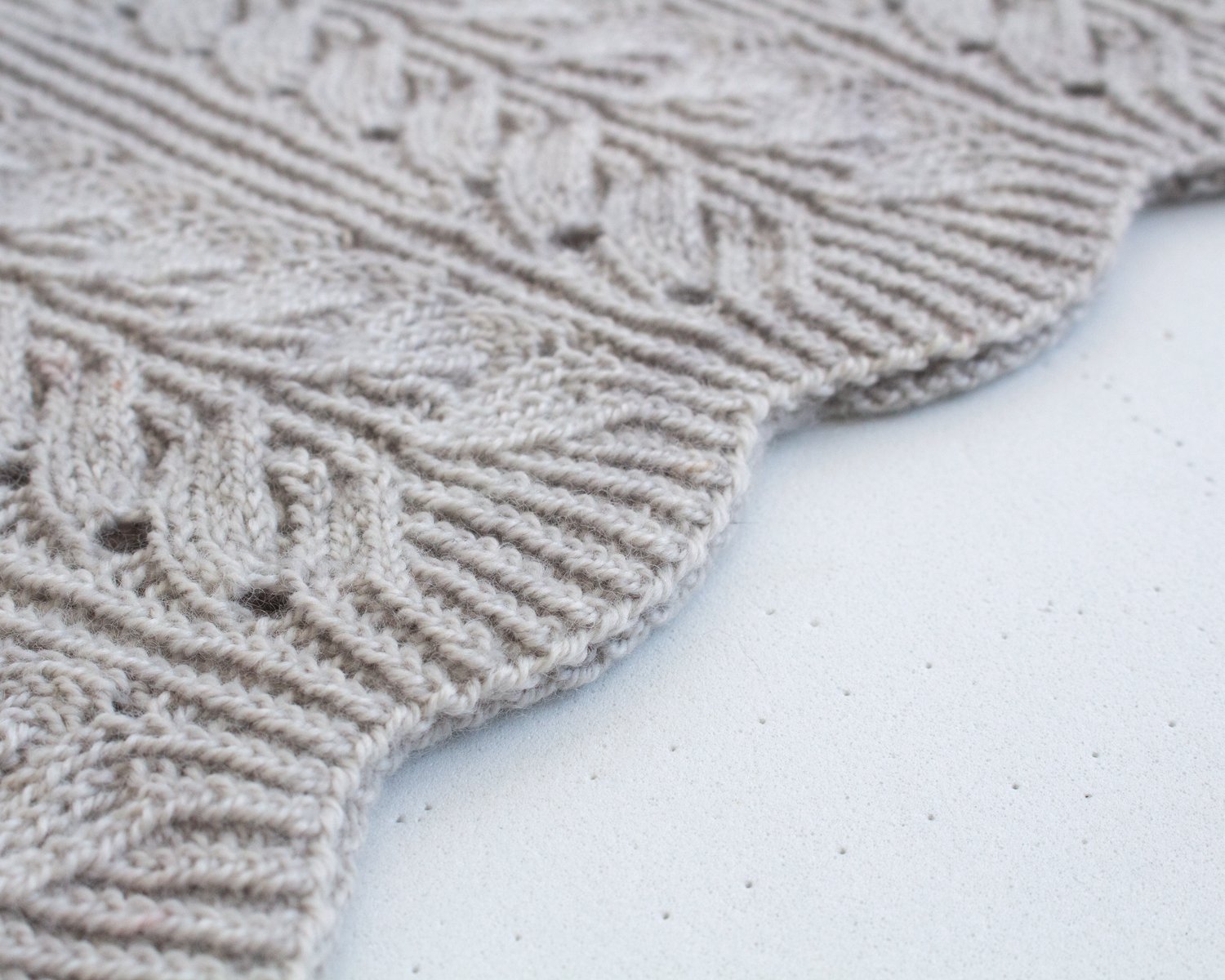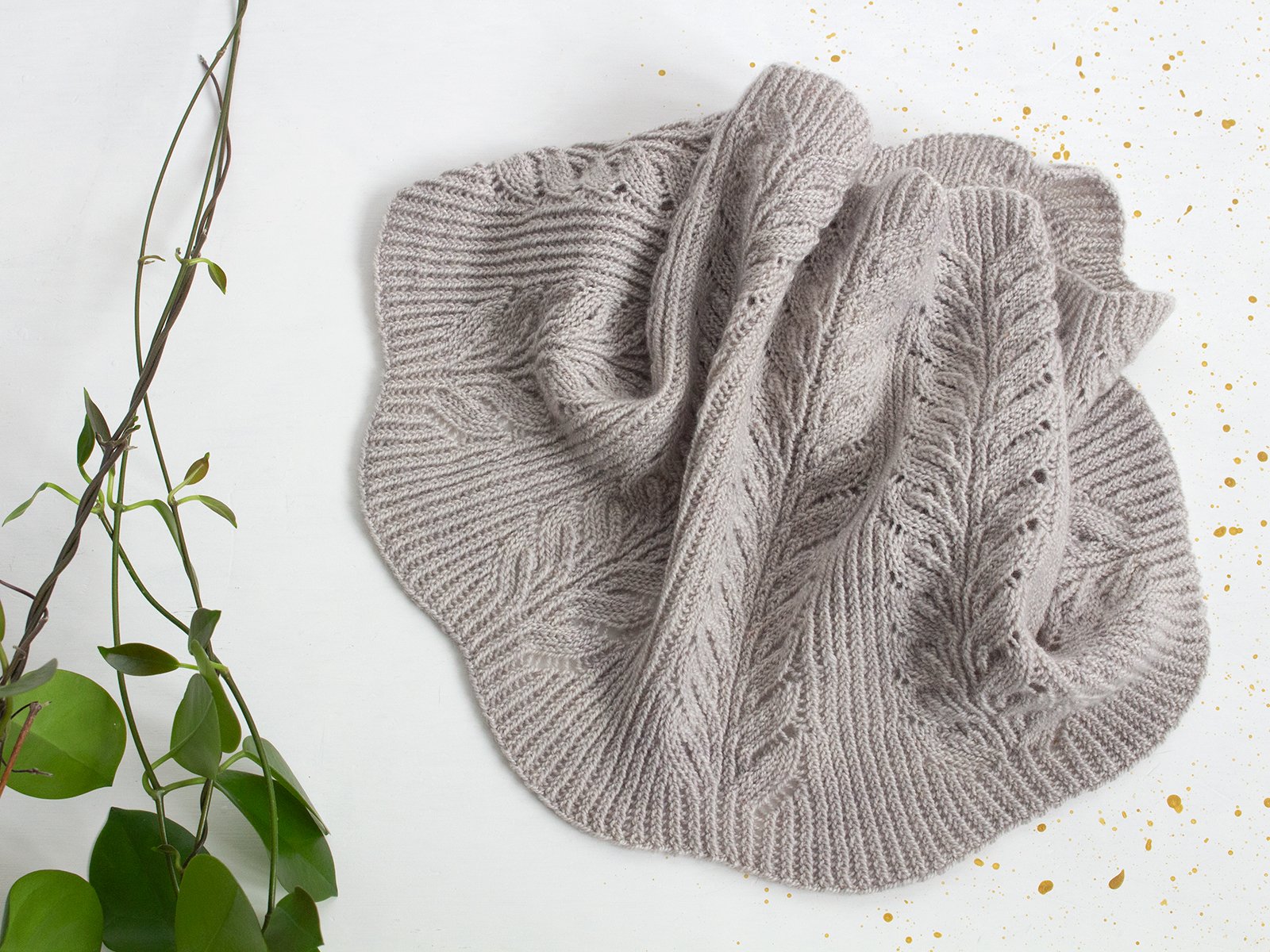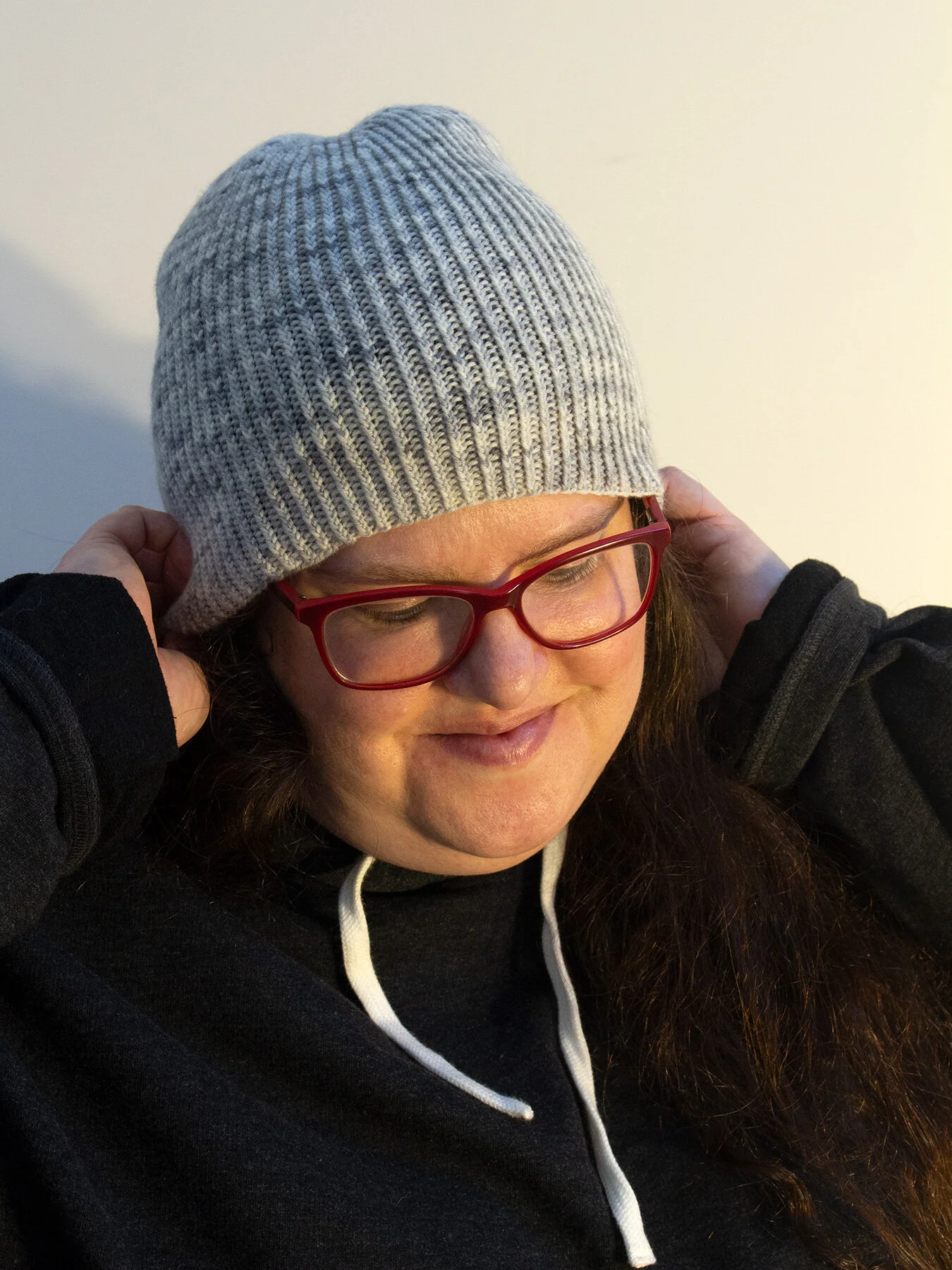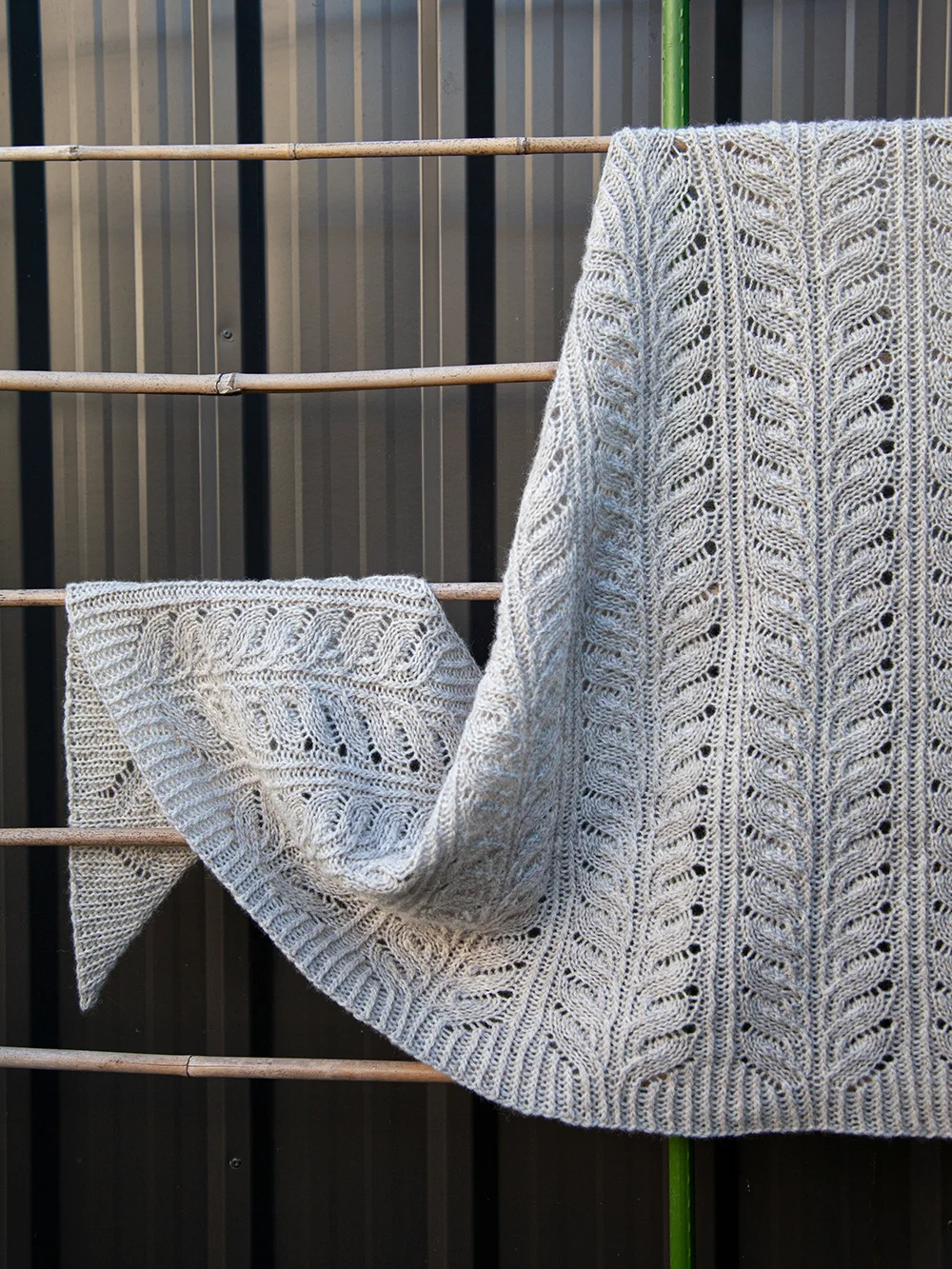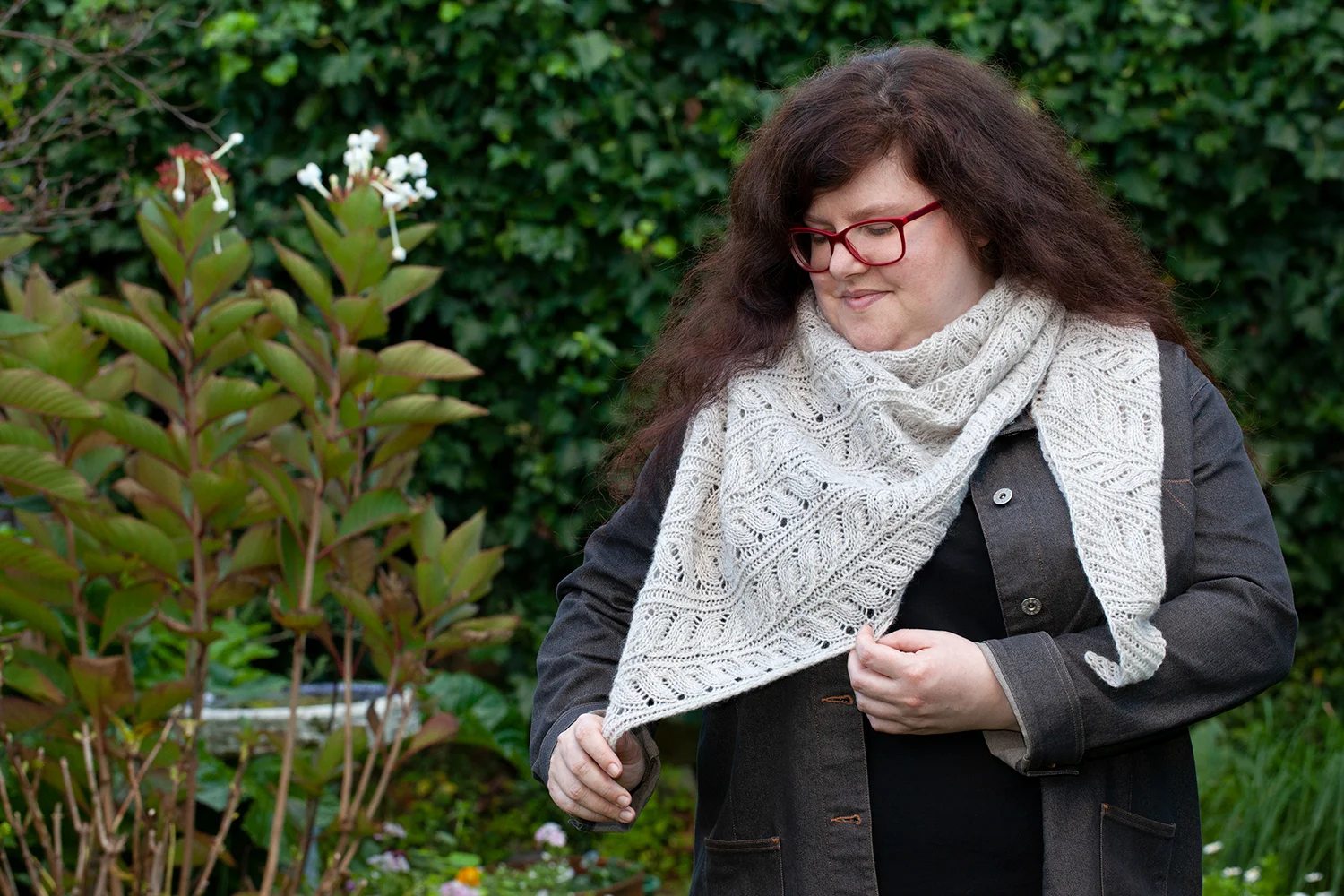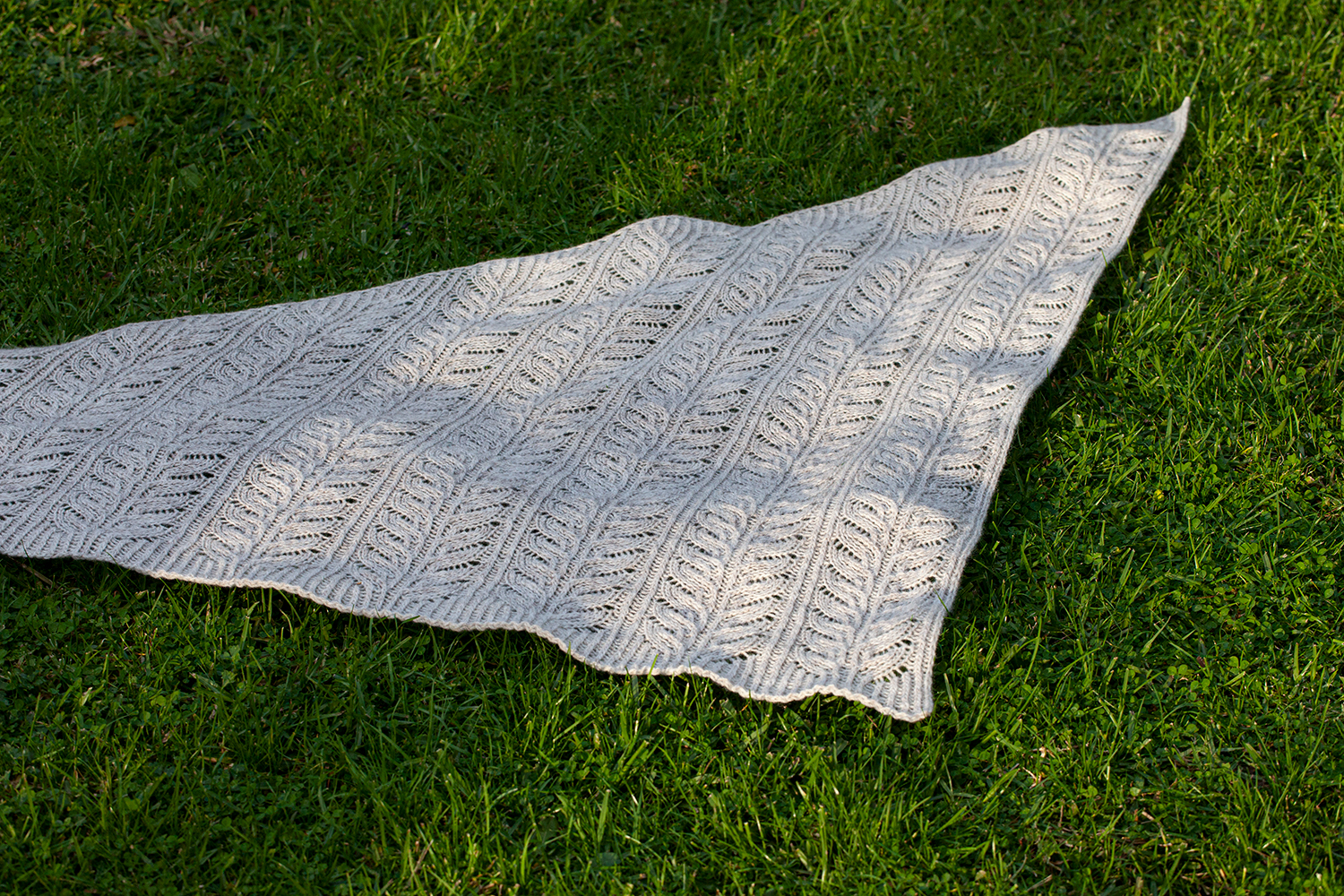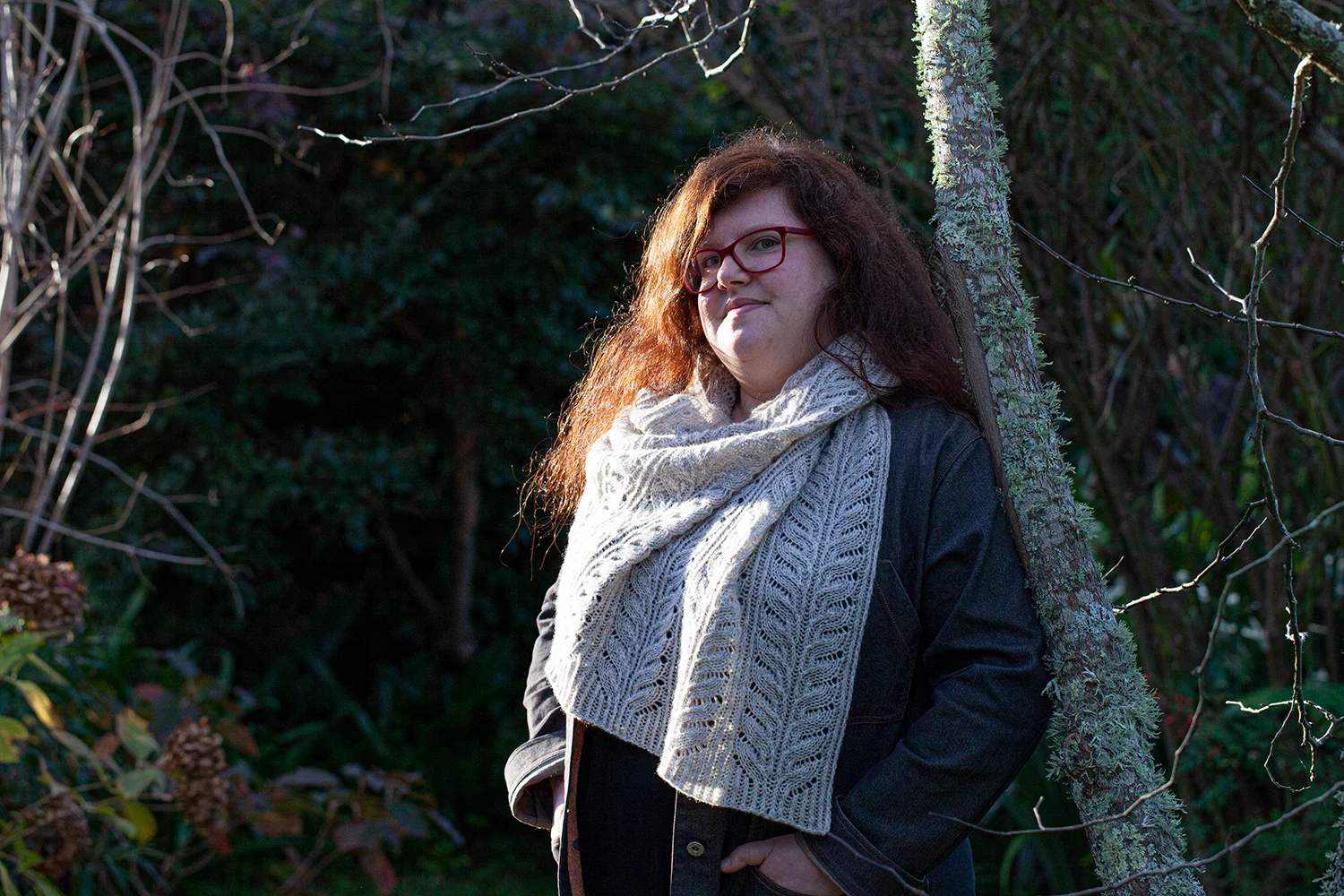I had a bit of a journey settling on the right yarn for this design! At first I had my heart set on using my gorgeous skein of Farmhaus Fibres Grounded Twist (a BFL/nylon blend) in the Copper Red colourway. Unfortunately, as you can see from the swatch photo below, the stitch pattern just isn't shining like it should, and for a design sample I really need to showcase the stitch pattern. So I switched to the gentle grey colourway Perfect Day on Farmhaus Fibres’ non-superwash base Homestead Merino, and it was indeed perfect.
Unfortunately this yarn is currently unavailable (its creator is on a dyeing hiatus), but hopefully I’ll be able to give you enough detail on its special properties to give you confidence in substituting a different yarn.
First of all, it’s a fingering-weight yarn with two twisted plies, composed of non-superwash fine merino, with 437yds/400m per 100g skein. My Beanstalk Hat and Shawl samples were also knit in non-superwash yarn, which I find helps to highlight the texture of the lace and ribbing in these designs. Colourway choice is also important for this pattern, as I discovered when swatching - the stitch pattern stands out the best in a solid or very-nearly-solid colourway. A number of my preview knitters also made beautiful cowls using subtly-variegated yarn. I think the problem with my Copper Red swatch lies with the tiny golden flashes which are much lighter than the base colour. If you do choose a semi-solid or variegated yarn, go for one that is low-contrast.
